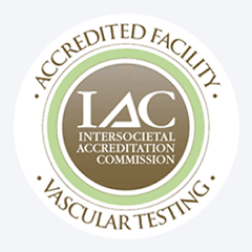Symptoms of Vein Disease
Do you experience leg discomfort, swelling, or visible veins? These could be signs of underlying vein disease, a condition that affects blood circulation and can lead to serious complications if left untreated.
Millions of Americans experience symptoms of venous insufficiency, often dismissing them as a normal part of aging or daily life. However, recognizing these warning signs early can help prevent long-term issues and improve your quality of life.

Request a Consultation

Common Symptoms of Vein Disease
Leg & Ankle Swelling (Edema)
- Puffiness or tightness in the lower legs and ankles
- Swelling that worsens throughout the day
- Shoes or socks leaving deep indentations
Poor circulation causes fluid to accumulate in the lower extremities. This swelling is often a sign of venous insufficiency and can become chronic if left untreated.
Leg Cramps
- Sudden, painful muscle spasms, especially at night
- Tightness or aching in the calves
- A persistent feeling of fatigue in the legs
Venous insufficiency leads to oxygen deprivation in the muscles, triggering cramps. If you experience frequent leg cramps, especially while resting, it may be due to poor blood flow.
Leg Ulcers
- Open sores or wounds on the lower legs that heal slowly
- Darkened skin around the ulcer
- A persistent burning or itching sensation
When veins fail to circulate blood efficiently, oxygen and nutrients struggle to reach the skin and tissues, leading to slow-healing wounds are a serious complication of vein disease and require medical treatment.
Poor Circulation
- Cold feet or toes
- Numbness, tingling, or heaviness in the legs
- Restless legs or discomfort after sitting or standing for long periods
Veins struggling to pump blood back to the heart lead to reduced oxygen flow, affecting nerve function and temperature regulation. Poor circulation can significantly impact mobility and daily activities.

Why You Shouldn’t Ignore These Symptoms
Ignoring symptoms of vein disease can lead to chronic pain, mobility challenges, and potential severe complications. The earlier vein disease is diagnosed, the easier it is to treat with minimally invasive procedures that restore healthy circulation.
Take the First Step Toward Healthier Legs
If you’re experiencing any of these symptoms, it’s time to take action. Book a free vein screening at United Vein & Vascular Centers today and find out how we can help you feel your best.
